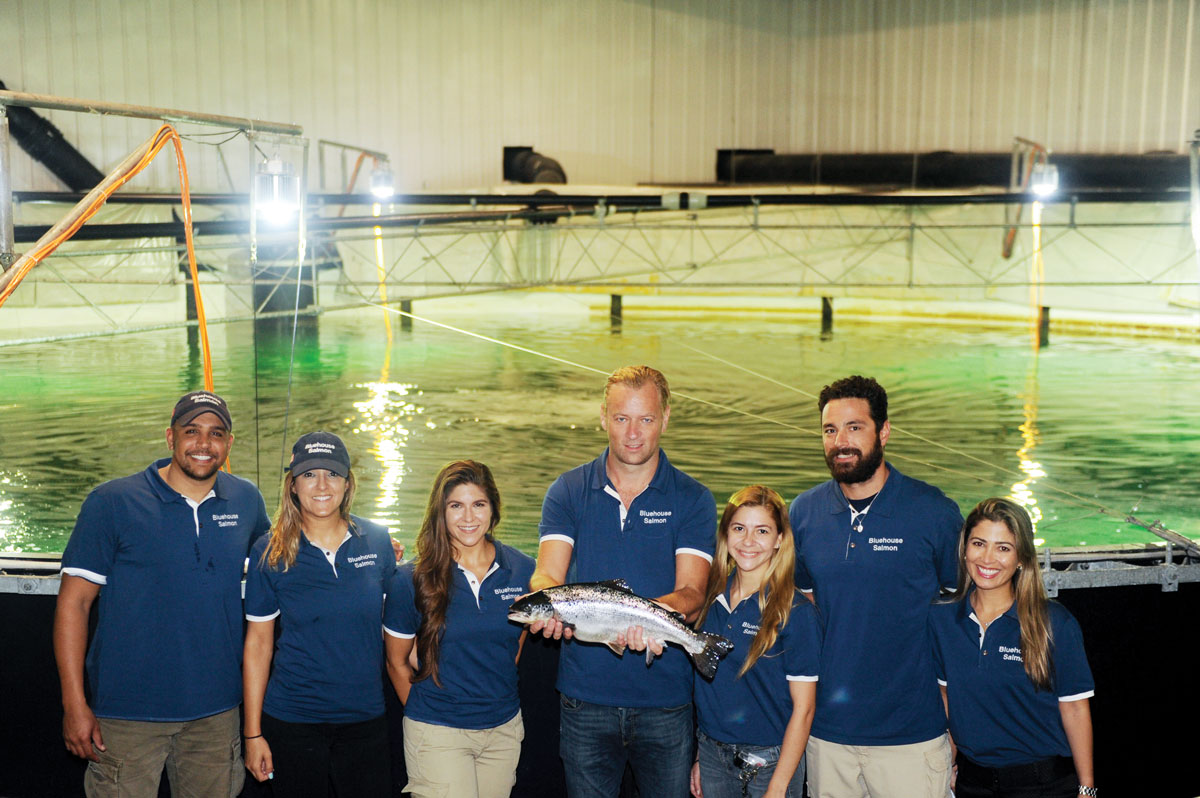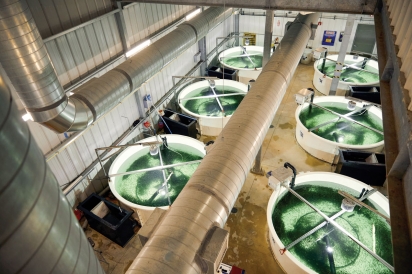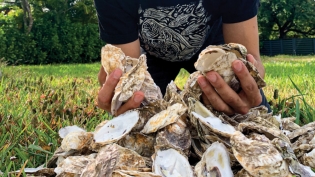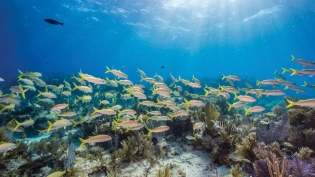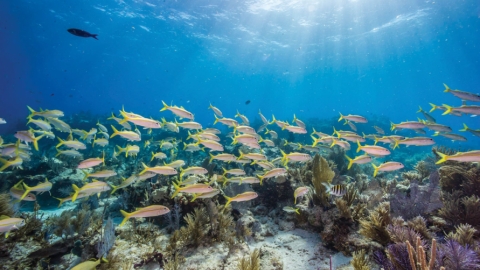Atlantic Salmon, Direct from South Florida
Atlantic Sapphire, the new “bluehouse” – think greenhouse for fish – is now shipping Bluehouse Salmon from their South Dade indoor facility, grown in tanks that use South Florida’s natural salt water aquifer.
The sustainability pitch? A small carbon footprint, for starters. Instead of catching an airplane from Chile or the North Atlantic, taking five or six days to get to consumers, this salmon is produced in our backyard and is super fresh, says Damien Claire, chief sales and marketing officer. “We harvest on Monday and within 24 to 48 hours, it’s in the stores,” he says.
In the United States, 95 percent of the salmon is imported, typically packed in Styrofoam for a long flight. Bluehouse Salmon, which spends less time in transit by truck from Florida, is packed in compostable packages. The startup Florida facility doesn’t use solar, wind or water power yet, but they hope to one day follow the practices in place at their Denmark facility, which runs on up to 50 percent renewable energy, and has its own rooftop solar plant.
Inside the tanks, in water that’s free of microplastics, salmon have room to swim, dive and jump. They eat an antibiotic-free diet that includes fish meal and oils sourced from trimmings and by-products that would otherwise become food waste.
The taste is milder and less fishy than other salmon, which American consumers prefer, says Claire. “We’re seeing repeat business. We’ve gotten great response from consumers,” he says. And they’re able to share their story when younger customers ask them, “How does this help the planet?”
BLUEHOUSE SALMON
bluehousesalmon.com
Bluehouse Salmon is now available in 2,000 retail locations in the U.S., including Publix and Sprouts in South Florida.


